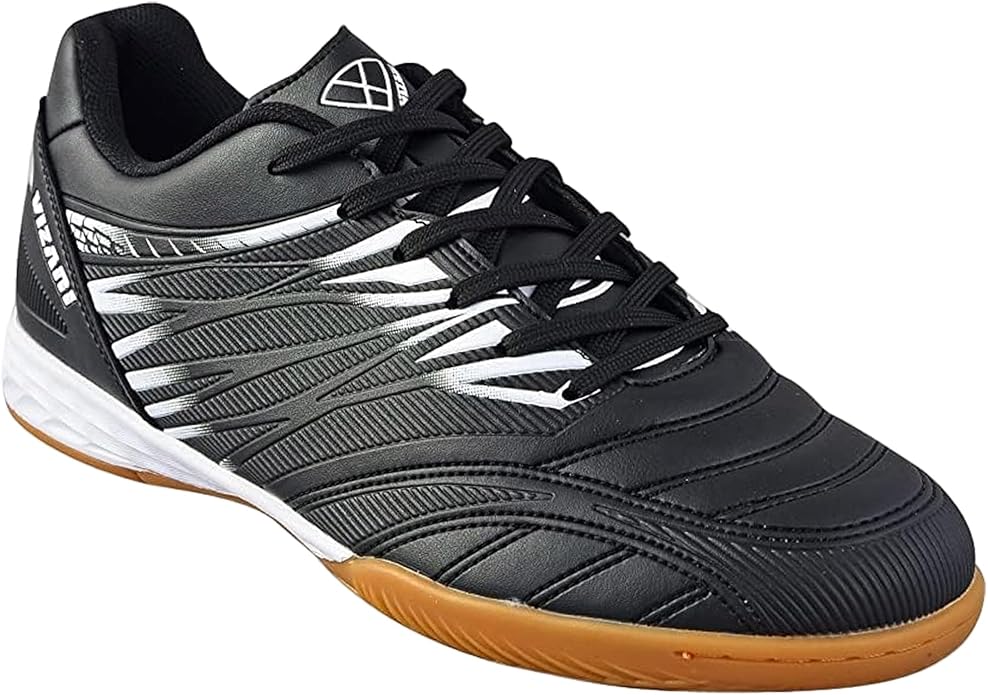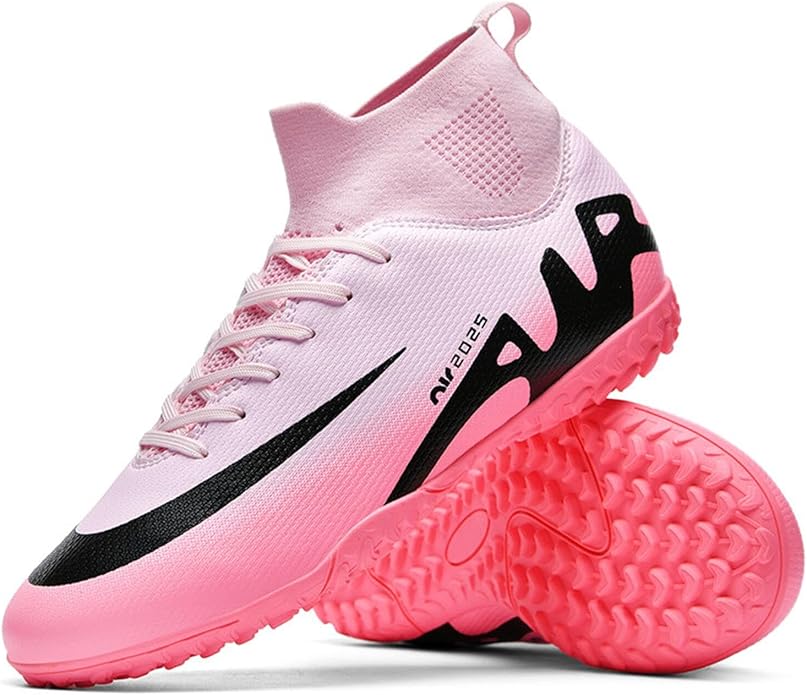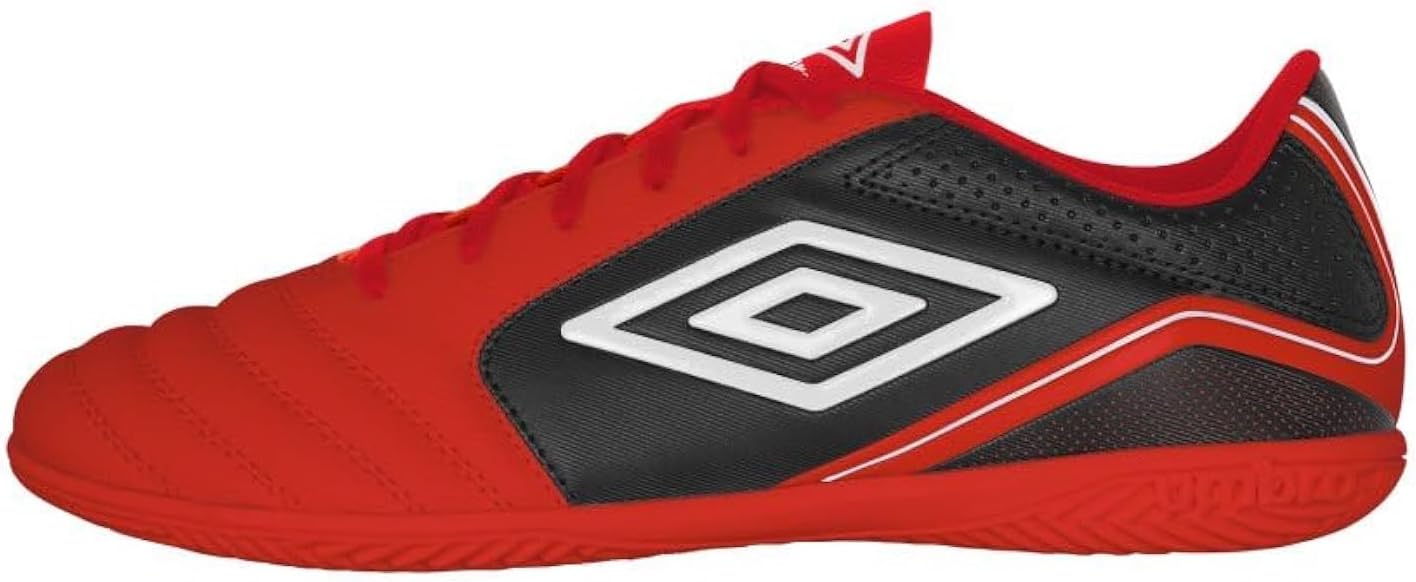⚽ For Futsal, Indoor Courts, and Precision Play
Indoor soccer demands agility, grip, and footwear designed for hard surfaces. In contrast to outdoor cleats or turf shoes, indoor soccer shoes emphasize non-marking soles, lightweight construction, and responsive traction for quick pivots. In this comprehensive guide, we analyze the best 5 models leading the field of 2025, together with affordable gems like the Vizari Lightweight Synthetic and premium stalwarts like the Umbro Classico, paired with essential FAQs serving players across the skill spectrum.

Key Features to Look for in Indoor Soccer Shoes
In advance of the reviews, here’s the anatomy of elite indoor fitness footwear:
- Non-Marking Outsoles: Avoid scuffing gym floors with rubber or gum rubber treads (e.g., herringbone patterns for multi-directional grip).
- Lightweight Construction: Synthetic uppers (such as TPU-coated mesh) minimize bulk without compromising durability.
- Cushioning & Support: EVA-injected midsoles absorb the impact of jumps and padded collars prevent the strain on ankles.
- Breathability: To keep feet dry in high-intensity matches, perforated panels or moisture-wicking liners (think CoolTech fabric) are necessary.
- Position-Specific Designs: Strikers should seek agility (low-profile soles); defenders need lateral stability.
Top 5 Indoor Soccer Shoes Reviewed
1. Vizari Lightweight Synthetic Indoor Soccer Shoes
- Best For: Budget-conscious players, indoor/futsal hybrids.
- Performance: Ideal for quick pivots and close ball control, though lacks premium cushioning for extended play.
Pros: Affordable, durable, true-to-size fit.
Cons: Limited arch support and basic aesthetics.

Vizari Lightweight Synthetic
- Synthetic Stitching: Reinforced toe cap for abrasion resistance.
- Herringbone Tread: Optimized for hardwood and turf.
- Non-Marking Rubber: Meets league standards for gym use.
2. TOPSFEBA Multi-Sport Training Shoes
- Best For: Multi-sport athletes (indoor soccer, baseball, gym training).
- Performance: A jack-of-all-trades shoe, but the wider toe box may feel loose for precision dribbling.
Pros: Versatile, breathable, unisex sizing.
Cons: Less ankle lockdown, average durability.

TOPSFEBA Multi-Sport Training
- Hexagonal Grip Pattern: Hybrid outsole works on courts and artificial turf.
- Breathable Knit Mesh: Reduces overheating during sprints.
- Shock-Absorbing Heel: EVA foam midsole cushions landings.
3. GOSAMORA Indoor Soccer Shoes
- Best For: Comfort seekers, and players with plantar fasciitis.
- Performance: Plush cushioning suits long tournaments, but the bulky design slows acceleration.
Pros: All-day comfort, stylish colorways.
Cons: Heavyweight, break-in period required.

GOSAMORA Indoor Soccer Shoes
- Memory Foam Insole: Customizable arch support.
- Reinforced TPU Overlays: Balances flexibility and structure.
- Abrasion-Resistant Outsole: Built for indoor courts and synthetic floors.
4. Football Low-Tops Non-Slip Athletic Shoes
- Best For: Futsal enthusiasts, and players needing ankle mobility.
- Performance: Excels in small-sided games, but thin insole lacks impact protection.
Pros: Agile, grippy, budget-friendly.
Cons: Minimal cushioning, runs narrow.

Football Low-Tops Non-Slip Athletic Shoes
- Anti-Slip Rubber: Grips polished surfaces during lateral cuts.
- Lace-Up Lockdown: Secure fit without restricting movement.
- Reinforced Toe Guard: Protects against scrapes in tight spaces.
5. Umbro Classico Indoor Soccer Shoes
- Best For: Traditionalists, wide-footed players.
- Performance: Timeless design with modern comfort, though heavier than synthetic rivals.
Pros: Durable, wide fit, retro appeal.
Cons: Limited color options, breaks down on turf.

Umbro Classico Indoor Soccer Shoes
- Gum Rubber Sole: Superior flexibility for ball feel.
- Classic Leather Upper: Molds to foot shape over time.
- Padded Tongue: Prevents lace pressure on instep.
Comparison Table: Best Indoor Soccer Shoes
| Model | Weight (oz) | Best For | Key Strength | |
| Vizari Lightweight | 8.2 | Budget Buyers | Affordability | |
| TOPSFEBA Trainer | 9.1 | Multi-Sport | Versatility | |
| GOSAMORA | 10.5 | Comfort | Cushioning | |
| Football Low-Tops | 8.7 | Futsal | Grip | |
| Umbro Classico | 11.2 | Heritage Appeal | Durability |
Indoor Soccer Shoes Buying Guide
Use these criteria to find your perfect pair:
1. Fit & Sizing
- Snug vs. Roomy: Indoor shoes should fit snugly without toe cramping.
- Width Options: Brands like TOPSFEBA offer wide sizes for bunions or orthotics.
- Break-In Period: Leather molds to feet; synthetics offer immediate comfort.
2. Sole Types
- Gum Rubber: Quiet, flexible, ideal for hardwood.
- TPU: Durable for turf but stiffer.
- Non-Marking: Mandatory for most indoor leagues.
3. Upper Materials
- Synthetic: Lightweight, water-resistant, affordable (e.g., Vizari).
- Leather/Suede: Better ball feel but less breathable (e.g., Umbro Classico).
4. Position-Specific Needs
- Forwards: Lightweight shoes (under 9 oz) for speed.
- Defenders: Ankle support and reinforced toes for physical play.
FAQs
1. Are indoor soccer shoes different from turf shoes?
Yes! Turf shoes feature shorter, rubber studs designed for artificial grass, while indoor shoes have flat, non-marking soles meant for hardwood or synthetic courts.
2. Can I use running shoes for indoor soccer?
Avoid it—running shoes lack lateral support and grippy outsoles, increasing injury risk during side-to-side movements.
3. How do I clean indoor soccer shoes?
Synthetic uppers should be wiped with a damp cloth. For leather (the Umbro Classico, for example), use conditioner to avoid cracking.
4. What’s better for futsal: gum rubber or synthetic soles?
Gum rubber (e.g., Football Low-Tops) provides superior grip on polished floors, and synthetic soles are more durable on abrasive surfaces.
5. Do indoor soccer shoes run small?
Well, a few brands (like TOPSFEBA) run large — always consult sizing charts. Opt for half a size smaller for a snugger ball control.
6. How often should I replace indoor soccer shoes?
Renew every 6–12 months if you play twice or thrice a week. Check for wear on the soles or less cushioning.
7. Can I wear indoor shoes outdoors?
It’s not recommended—hard surfaces like concrete degrade non-marking soles faster.
Final
The Vizari Lightweight Synthetic is the best all-around option for cheap speed, and the Umbro Classico takes the bough for heritage. TOPSFEBA Trainer — Best for Hybrid Athletes The Trainer seamlessly connects hybrid athletes, soccer, and cross-training. Consider non-marking soles, position needs, and breathability to conquer every indoor game.
